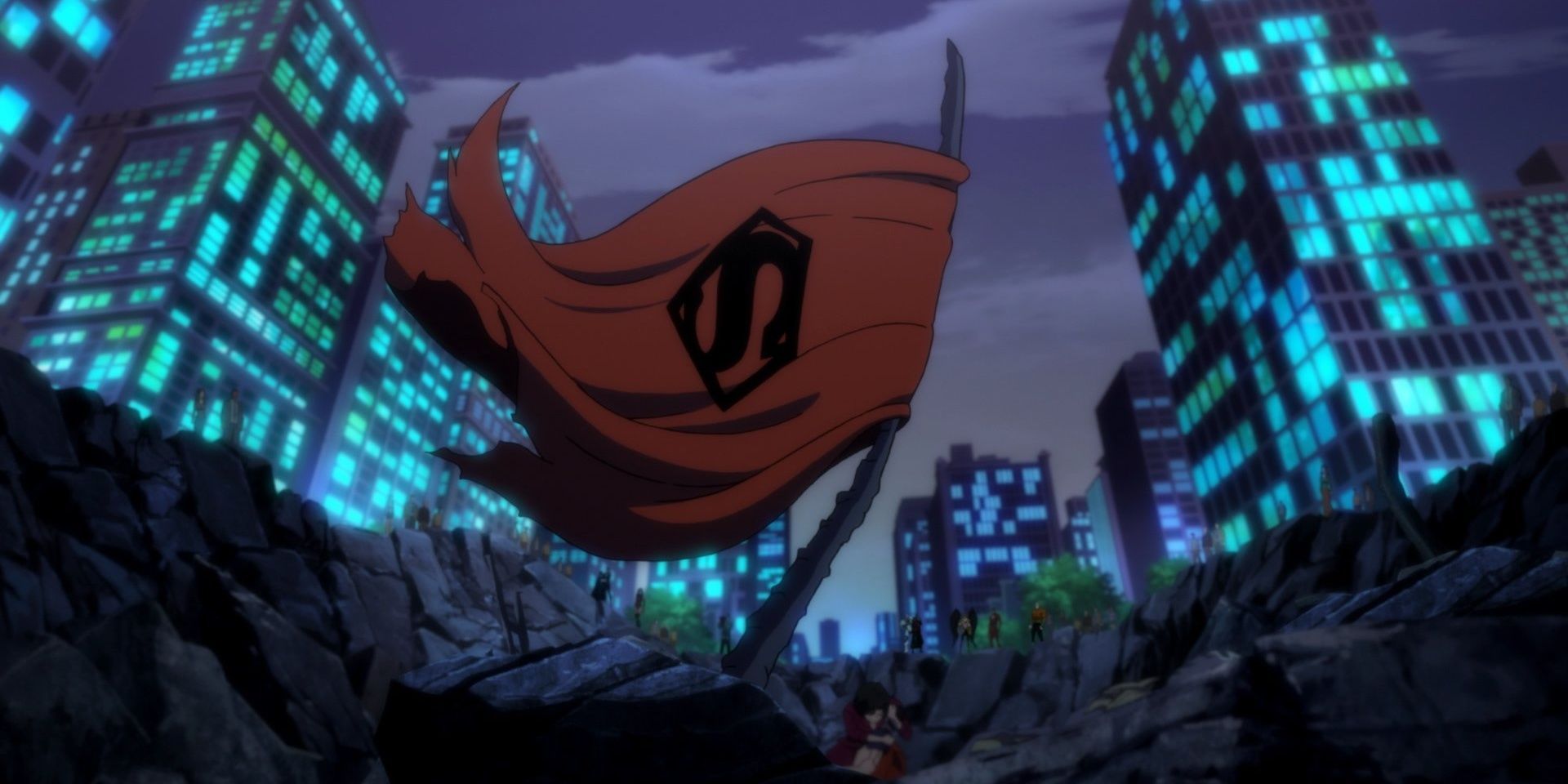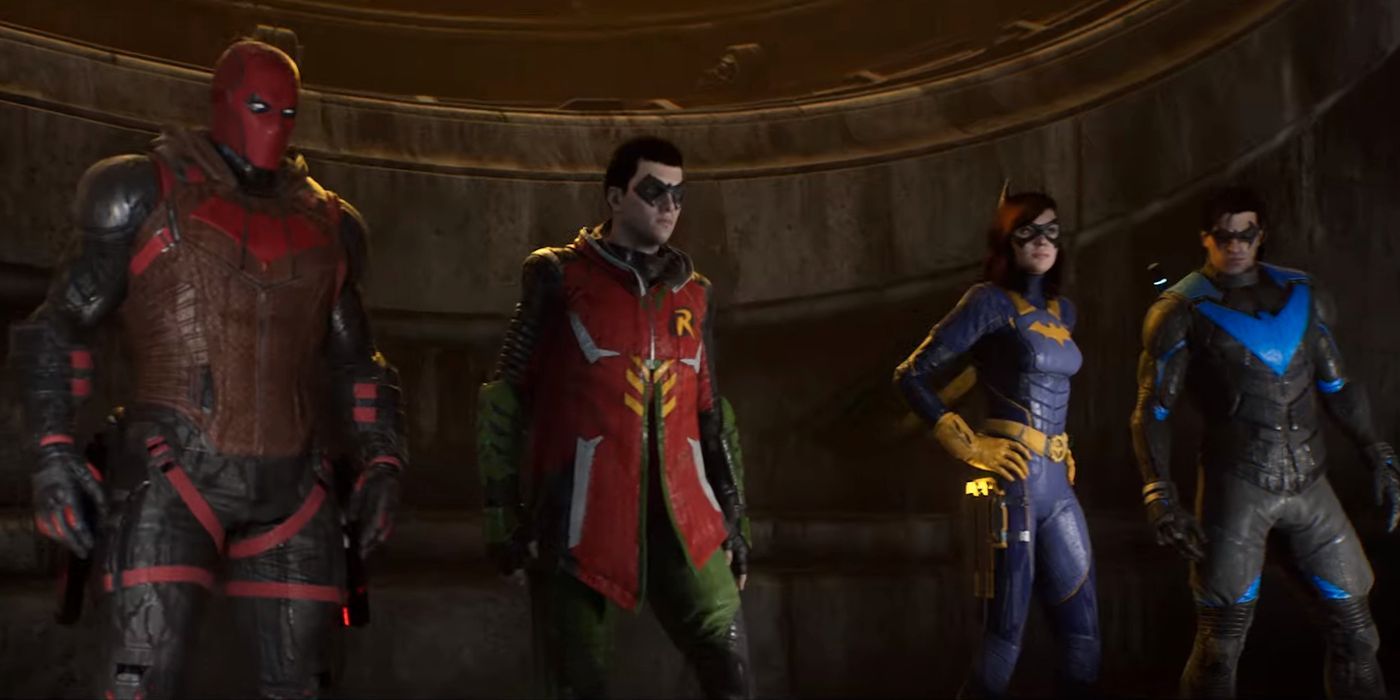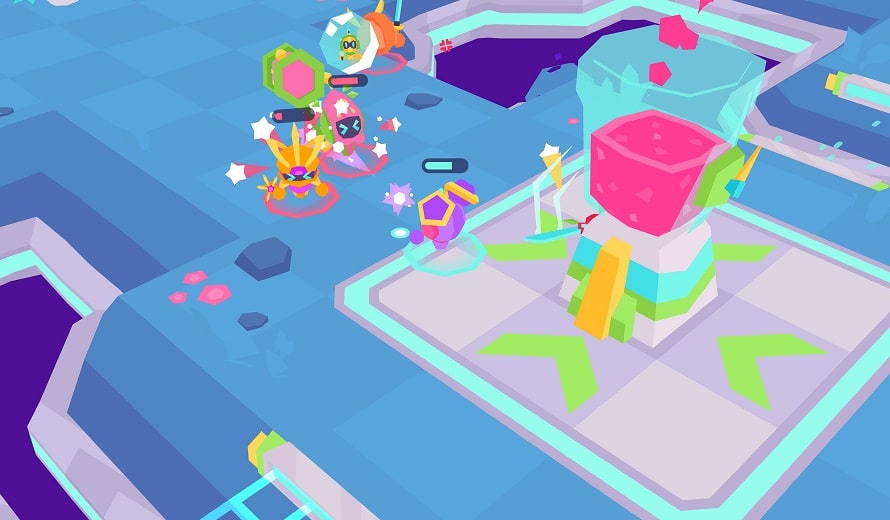
WB Games Montreal's Gotham Knights was revealed amid the DC FanDome event in August 2020 with a trailer that likely shocked some fans of the Dark Knight by revealing this upcoming game centers a story in which Bruce Wayne has died. Four of Batman's proteges from throughout DC Comics' history are called together to fight crime in his place: Jason Todd (Red Hood), Tim Drake (Robin), Barbara Gordon (Batgirl), and Dick Grayson (Nightwing). However, with general audiences most accustomed to movies and the Batman: Arkham series, it's still unusual to imagine a game set in Gotham City without Bruce Wayne as a playable character.
There is potential for a lot of playable characters in Gotham Knights beyond the four proteges gathered by Batman's "Code Black;" a contingency set up in the case of his untimely demise. In fact, it might not even be a stretch to imagine Batman himself showing up to fight crime. Superhero media is packed full of stories where characters die, only to return in the future – either due to some means of revival, or because they were never truly dead in the first place. Gotham Knights has the opportunity to open audiences up to a unique take on the Batman mythos, so it would behoove the developers to avoid digging into this potentially messy trope.
RELATED: Why Harley Quinn Deserves Her Own Video Game
Death in Comic Book-Adjacent Media

Comic books have existed for decades, and DC Comics' golden boy Superman was introduced in Action Comics #1 released in June 1938. With such an extensive history it's not hard to imagine why death is a common occurence in stories published by DC, Marvel, and other comic distributors. The death of a loved one is about as classic a motivating factor as they come, for example with Spider-Man's entire driving philosophy based on his deceased Uncle Ben's quote, "With great power comes great responsibility." A superhero themselves dying can also open the door for a new generation to take up that mantle, as seen with Miles Morales following Peter Parker's death in Spider-Man: Into the Spider-Verse (2018).
However, the long arm of comic book history is also a double-edged sword in that regard, as there is just as much drama to be mined from bringing back dead characters and giving them added importance, either in an ongoing or spin-off narrative. Going back to Spider-Man, one example could be made of Gwen Stacy. An early romantic partner for Peter Parker, her most notable story for a long time was her death in 1973. However, since then she has made comic book appearances, notably as the superhero Spider-Gwen also seen in media like Into the Spider-Verse.
DC Comics is just as guilty of this as Marvel, with the arguably most infamous example being Superman's death in The Death of Superman story arc that took place in the 1990s. Other characters had been killed before, for example Jason Todd's Robin in the A Death in the Family storyline just a few years prior, but for the publisher to kill its most recognizable character and symbol of hope shocked fans around the world. However, Clark Kent's death didn't stick for long, much like its adaptation in Zack Snyder's Batman v Superman: Dawn of Justice (2016).
RELATED: Every Marvel and DC Character in Fortnite
Batman's Death in Gotham Knights Should Mean Something

The idea of superheroes dying and coming back to life is such a well-worn trope that it has been explored in various pieces of media. DreamWorks Animations' Megamind (2010) was a satirical, comedic take on the Superhero origin story that centered around a villain who came to Earth much like Clark Kent, only to land in a prison and embrace villainy rather than goodness. A more traditional Superman analog also exists via Brad Pitt's Metro Man, but he fakes his own death near the start of the film in order to pursue a more personally fulfilling career in music.
Sometimes the death and revival trope is used to great effect, such as in the Amazon Prime animated adaptation of Robert Kirkman's Invincible. The series' Justice League, a group called the Guardians of the Globe, are killed in the first episode when Superman analog Omni-Man begins preparing the planet for a takeover by his people: the Viltrumites. A member named The Immortal is brought back to life in order to help fight Omni-Man, but is killed again as a means of showing Invincible that his father truly is a ruthless, nigh-uncaring conquerer.
Yet resorting to a twist that revives a beloved superhero takes away one of the most potent reasons why the trope exists in the first place: Exploring the toll their death takes on surrounding characters. The Gotham Knights reveal trailer offers hints of this depth to be explored in the game, with each protege reacting to the news of Bruce Wayne's death in different ways. Notably, Batgirl tears up as the previous loss of her father Jim Gordon is brought up, and Nightwing takes out his aggressions on a training dummy.
Each hero in Gotham Knights will have unique fighting styles, and the game's two-player co-op means those styles will hopefully intersect in distinct ways that say a lot about each character. However, WB Games Montreal needs to make sure it does the same for their characterization, and one key way to do this is by exploring how everyone reacts to Batman's death. Bringing the Dark Knight back unceremoniously mid-way through the game to help stop some larger plot would probably stunt any growth the four proteges experience.
It's still tempting to throw Batman into Gotham Knights. After all, it's likely Gotham Knights is the closest thing fans will get to a Batman game for some time considering Batman: Arkham series developer Rocksteady Studios is working on Suicide Squad: Kill the Justice League (which takes place in the Arkham universe but stars villains such as Harley Quinn). Even so, Warner Bros. should resist the urge to bring Bruce Wayne back, otherwise it risks one of its most potent storytelling devices.
Gotham Knights is set to release in 2022 for PC, PS4, PS5, Xbox One, and Xbox Series X/S.
MORE: Injustice 3 Could Lead the Perfect Trifecta in 2022


